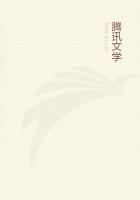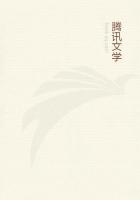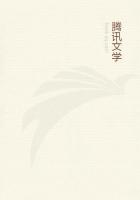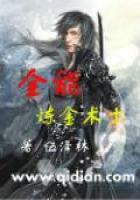1. Dionysus, the Goat and the Bull.
HOWEVER we may explain it, the fact remains that in peasant folk-lore the corn-spirit is very commonly conceived and represented in animal form. May not this fact explain the relation in which certain animals stood to the ancient deities of vegetation, Dionysus, Demeter, Adonis, Attis, and Osiris?
To begin with Dionysus. We have seen that he was represented sometimes as a goat and sometimes as a bull. As a goat he can hardly be separated from the minor divinities, the Pans, Satyrs, and Silenuses, all of whom are closely associated with him and are represented more or less completely in the form of goats. Thus, Pan was regularly portrayed in sculpture and painting with the face and legs of a goat. The Satyrs were depicted with pointed goat-ears, and sometimes with sprouting horns and short tails. They were sometimes spoken of simply as goats; and in the drama their parts were played by men dressed in goatskins. Silenus is represented in art clad in a goatskin. Further, the Fauns, the Italian counterpart of the Greek Pans and Satyrs, are described as being half goats, with goat-feet and goat-horns. Again, all these minor goat-formed divinities partake more or less clearly of the character of woodland deities. Thus, Pan was called by the Arcadians the Lord of the Wood.
The Silenuses kept company with the tree-nymphs. The Fauns are expressly designated as woodland deities; and their character as such is still further brought out by their association, or even identification, with Silvanus and the Silvanuses, who, as their name of itself indicates, are spirits of the woods. Lastly, the association of the Satyrs with the Silenuses, Fauns, and Silvanuses, proves that the Satyrs also were woodland deities. These goat-formed spirits of the woods have their counterparts in the folk-lore of Northern Europe. Thus, the Russian wood-spirits, called Ljeschie (from ljes, wood), are believed to appear partly in human shape, but with the horns, ears, and legs of goats. The Ljeschi can alter his stature at pleasure; when he walks in the wood he is as tall as the trees; when he walks in the meadows he is no higher than the grass. Some of the Ljeschie are spirits of the corn as well as of the wood; before harvest they are as tall as the corn-stalks, but after it they shrink to the height of the stubble. This brings outwhat we have remarked beforethe close connexion between tree-spirits and corn-spirits, and shows how easily the former may melt into the latter. Similarly the Fauns, though wood-spirits, were believed to foster the growth of the crops. We have already seen how often the corn-spirit is represented in folk-custom as a goat. On the whole, then, as Mannhardt argues, the Pans, Satyrs, and Fauns perhaps belong to a widely diffused class of wood-spirits conceived in goat-form. The fondness of goats for straying in woods and nibbling the bark of trees, to which indeed they are most destructive, is an obvious and perhaps sufficient reason why wood-spirits should so often be supposed to take the form of goats. The inconsistency of a god of vegetation subsisting upon the vegetation which he personifies is not one to strike the primitive mind. Such inconsistencies arise when the deity, ceasing to be immanent in the vegetation, comes to be regarded as its owner or lord; for the idea of owning the vegetation naturally leads to that of subsisting on it. Sometimes the corn-spirit, originally conceived as immanent in the corn, afterwards comes to be regarded as its owner, who lives on it and is reduced to poverty and want by being deprived of it. Hence he is often known as the Poor Man or the Poor Woman. Occasionally the last sheaf is left standing on the field for the Poor Old Woman or for the Old Rye-woman.
Thus the representation of wood-spirits in the form of goats appears to be both widespread and, to the primitive mind, natural. Therefore when we find, as we have done, that Dionysusa tree-godis sometimes represented in goat-form, we can hardly avoid concluding that this representation is simply a part of his proper character as a tree-god and is not to be explained by the fusion of two distinct and independent worships, in one of which he originally appeared as a tree-god and in the other as a goat.
Dionysus was also figured, as we have seen, in the shape of a bull. After what has gone before we are naturally led to expect that his bull form must have been only another expression for his character as a deity of vegetation, especially as the bull is a common embodiment of the corn-spirit in Northern Europe; and the close association of Dionysus with Demeter and Persephone in the mysteries of Eleusis shows that he had at least strong agricultural affinities.
The probability of this view will be somewhat increased if it can be shown that in other rites than those of Dionysus the ancients slew an OX as a representative of the spirit of vegetation. This they appear to have done in the Athenian sacrifice known as the murder of the OX (bouphonia). It took place about the end of June or beginning of July, that is, about the time when the threshing is nearly over in Attica. According to tradition the sacrifice was instituted to procure a cessation of drought and dearth which had afflicted the land. The ritual was as follows. Barley mixed with wheat, or cakes made of them, were laid upon the bronze altar of Zeus Polieus on the Acropolis. Oxen were driven round the altar, and the OX which went up to the altar and ate the offering on it was sacrificed. The axe and knife with which the beast was slain had been previously wetted with water brought by maidens called water-carriers. The weapons were then sharpened and handed to the butchers, one of whom felled the OX with the axe and another cut its throat with the knife. As soon as he had felled the OX, the former threw the axe from him and fled; and the man who cut the beast's throat apparently imitated his example. Meantime the OX was skinned and all present partook of its flesh.

